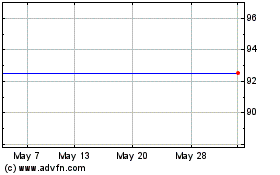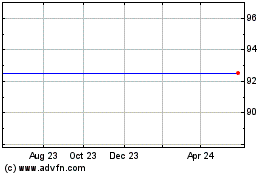Statement re Study results
September 24 2007 - 11:37AM
UK Regulatory
RNS Number:3820E
Amarin Corporation Plc
24 September 2007
AMARIN ANNOUNCES PUBLICATION OF PRE-CLINICAL MEMORY DATA IN JOURNAL OF
NEUROCHEMISTRY
Pre-Clinical Study Results For Memory and Cognition Validate Clinical
Development Program
LONDON, United Kingdom, September 24, 2007 - Amarin Corporation plc (NASDAQ:
AMRN) ("Amarin" or "Company") announced that the results of a pre-clinical
program in memory and cognition using ultra-pure eicosapentanoic acid (EPA) have
been published in the "Journal of Neurochemistry" (Minogue AM et al 2007 J.
Neurochem. 10.1111/j.1471-4159.2007.04848.x) in an article entitled, "Modulation
of amyloid-ss-induced and age-associated changes in rat hippocampus by
eicosapentaenoic acid."
The preclinical study was conducted by Professor Marina Lynch, Department of
Physiology, Institute of Neuroscience, Trinity College, Dublin, and demonstrated
that EPA attenuates the age-related and b amyloid-induced impairment of Long
Term Potentiation (LTP). LTP is a phenomenon considered an important marker of
the integrity of neural processes involved in memory and cognition. This
mechanism was identified by Professor Eric Kandel as fundamental in mediating
memory and cognition and, consequently, LTP is considered a major mechanism by
which the brain learns and maintains memories.
The study confirmed that EPA reduced concentrations of the pro-inflammatory
interleukin 1b (IL-b), and phosphorylation of the stress-activated protein
kinase, c-jun N-terminal kinase (JNK). These factors are associated with
inhibition of LTP thus potentially impair memory and cognition.
Commenting on the study, Professor Lynch said, "These findings identify an
important potential role for EPA in modulating ss-amyloid-induced and
age-related changes in the brain and the present findings suggest that the
beneficial effects of EPA are likely to result from its attenuation of
hippocampal IL-1ss concentration, perhaps as a consequence of its action on
expression of PPARg."
Rick Stewart, Chief Executive Officer of Amarin, commented, "These findings are
very encouraging and provide the validation to proceed with our clinical
development program using EPA for Age Associated Memory Impairment and
cognition. They are especially important as the findings reinforce the
substantial body of pre-clinical work already undertaken. We expect to commence
a clinical program in Age Associated Memory Impairment by year-end."
About the Role of EPA in Long-Term Potentiation (LTP), Age Associated Memory
Impairment (AAMI) and Cognition
Aging is associated with impairment in LTP, resulting in Age Associated Memory
Impairment (AAMI) and cognitive function. This impairment results from
inflammatory and oxidative changes in the hippocampal area of the brain. In
pre-clinical studies, analysis of the mechanisms underlying the effect of aging
on hippocampal function has focused to a significant extent on analysis of
age-related changes in long-term potentiation (LTP) in the hippocampus.
Further, these findings support the substantial preclinical studies previously
published in the use of EPA to promote LTP in aging models.
About Amarin
Amarin is committed to improving the lives of patients suffering from diseases
of the central nervous system. Our goal is to be a leader in the research,
development and commercialization of novel drugs that address unmet patient
needs.
Amarin's core development pipeline includes programs for Parkinson's disease,
Age Associated Memory Impairment, cognition, epilepsy seizures and other Central
Nervous System (CNS) disorders.
Amarin has its primary stock market listing in the U.S. on NASDAQ ("AMRN") and
secondary listings in the U.K. and Ireland on AIM ("AMRN") and IEX ("H2E"),
respectively.
For press releases and other corporate information, visit the Amarin website at
http://www.amarincorp.com. Information on our website does not form part of this
press release.
References
1. Kavanagh T., Lonergan P. E., and Lynch M. A. (2004) Eicosapentaenoic acid
and gamma-linolenic acid increase hippocampal concentrations of IL-4 and
IL-10 and abrogate lipopolysaccharide-induced inhibition of long-term
potentiation. Prostaglandins Leukot Essent Fatty Acids 70, 391-7.
2. Martin D. S., Spencer P., Horrobin D. F., and Lynch M. A. (2002) Long-term
potentiation in aged rats is restored when the age-related decrease in
polyunsaturated fatty acid concentration is reversed. Prostaglandins Leukot
Essent Fatty Acids 67, 121-30.
3. McGahon B. M., Martin D. S., Horrobin D. F., and Lynch M. A. (1999a)
Age-related changes in synaptic function: analysis of the effect of dietary
supplementation with omega-3 fatty acids. Neuroscience 94, 305-14.
4. McGahon B. M., Murray C. A., Horrobin D. F., and Lynch (1999b) Age-related
changes in oxidative mechanisms and LTP are reversed by dietary
manipulation. Neurobiol Aging 20, 643-53.
5. Song C. and Horrobin D. (2004) Omega-3 fatty acid ethyl-eicosapentaenoate,
but not soybean oil, attenuates memory impairment induced by central
IL-1beta administration. J Lipid Res 45, 1112-21.
6. Song C., Li X., Leonard B. E., and Horrobin D. F. (2003) Effects of dietary
n-3 or n-6 fatty acids on interleukin-1beta-induced anxiety, stress, and
inflammatory responses in rats. J Lipid Res 44, 1984-91.
7. Song C., Phillips A. G., Leonard B. E., and Horrobin D. F. (2004)
Ethyl-eicosapentaenoic acid ingestion prevents corticosterone-mediated
memory impairment induced by central administration of interleukin-1beta in
rats. Mol Psychiatry 9, 630-8.
8. Lonergan PE, Martin DSD, Horrobin DF. and Lynch MA (2004). Neuroprotective
actions of eicosapentaenoic acid on lipopolysaccharide dysfunction in rat
hippocampus. J. Neurochem., 91, 20-29.
9. Lynch AM, Moore M, Craig S, Lonergan PE, Martin DS and Lynch MA. (2003)
Analysis of IL-1beta -induced cell signaling activation in rat hippocampus
following exposure to gamma irradiation: protective effect of
eicosapentaenoic acid. J Biol Chem. 51, 51075-51084
10. Martin DS, Lonergan PE, Boland B, Fogarty MP, Brady M, Horrobin DF, Campbell
VA and Lynch MA (2002) Apoptotic changes in the aged brain are triggered by
interleukin-1 beta -induced activation of p38 and reversed by treatment with
eicosapentaenoic acid. J. Biol. Chem., 277, 34239-34246.
11. Lonergan PE, Martin DSD, Horrobin DF and Lynch MA (2002) Neuroprotective
effect of eicosapentanoate in hippocampus of rats exposed to Gamma
irradiation. J. Biol. Chem., 277, 20804-20811.
Contacts:
Amarin +44 (0) 207 907 2442
Rick Stewart Chief Executive Officer
Alan Cooke President and Chief Financial Officer
investor.relations@amarincorp.com
Investors:
Lippert/Heilshorn & Associates, Inc.
Anne Marie Fields +1 212 838 3777
Media:
Powerscourt +44 (0) 207 250 1446
Rory Godson
Broker:
Davy
Fergal Meehan +353 (0) 1 679 6363
Disclosure Notice:
The information contained in this document is as of September 24, 2007. Amarin
assumes no obligation to update any forward-looking statements contained in this
document as a result of new information or future events or developments. This
document contains forward-looking statements about Amarin's financial condition,
results of operations, business prospects and products in research that involve
substantial risks and uncertainties. You can identify these statements by the
fact that they use words such as "will", "anticipate", "estimate", "expect",
"project", "forecast", "intend", "plan", "believe" and other words and terms of
similar meaning in connection with any discussion of future operating or
financial performance or events. Among the factors that could cause actual
results to differ materially from those described or projected herein are the
following: the success of Amarin's research and development activities;
decisions by regulatory authorities regarding whether and when to approve
Amarin's drug applications, as well as their decisions regarding labeling and
other matters that could affect the commercial potential of Amarin's products;
the speed with which regulatory authorizations, pricing approvals and product
launches may be achieved; the success with which developed products may be
commercialized; competitive developments affecting Amarin's products under
development; the effect of possible domestic and foreign legislation or
regulatory action affecting, among other things, pharmaceutical pricing and
reimbursement, including under Medicaid and Medicare in the United States, and
involuntary approval of prescription medicines for over-the-counter use;
Amarin's ability to protect its patents and other intellectual property; claims
and concerns that may arise regarding the safety or efficacy of Amarin's product
candidates; governmental laws and regulations affecting Amarin's operations,
including those affecting taxation; Amarin's ability to maintain sufficient cash
and other liquid resources to meet its operating requirements; general changes
in International and U.S. generally accepted accounting principles; growth in
costs and expenses; and the impact of acquisitions, divestitures and other
unusual items. A further list and description of these risks, uncertainties and
other matters can be found in Amarin's Form 20-F for the fiscal year ended
December 31, 2006, filed with the SEC on March 5 2007, Amarin's statutory annual
report for the year ended 31 December, 2006 furnished on a Form 6-K to the SEC
on May 9, 2007 and in its Reports of Foreign Issuer on Form 6-K furnished to the
SEC.
Ends.
This information is provided by RNS
The company news service from the London Stock Exchange
END
STRILFVEAVISFID
Amarin (LSE:AMRN)
Historical Stock Chart
From Jan 2025 to Feb 2025

Amarin (LSE:AMRN)
Historical Stock Chart
From Feb 2024 to Feb 2025
